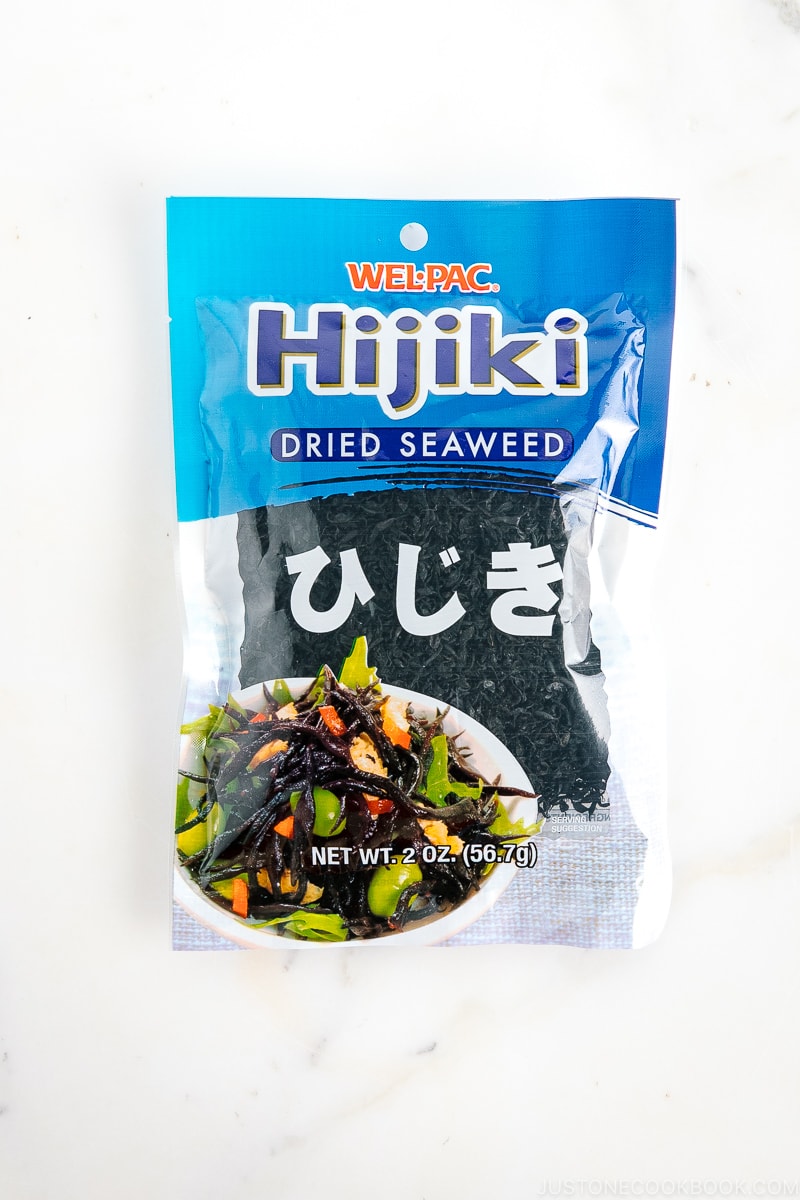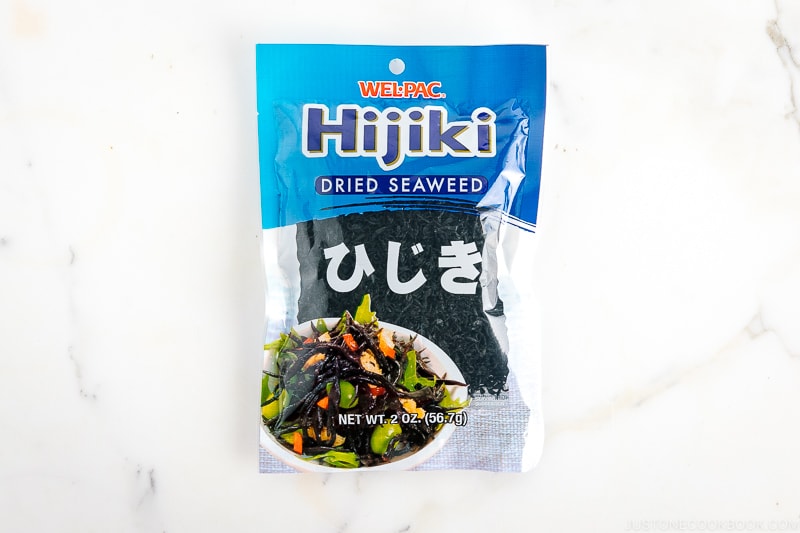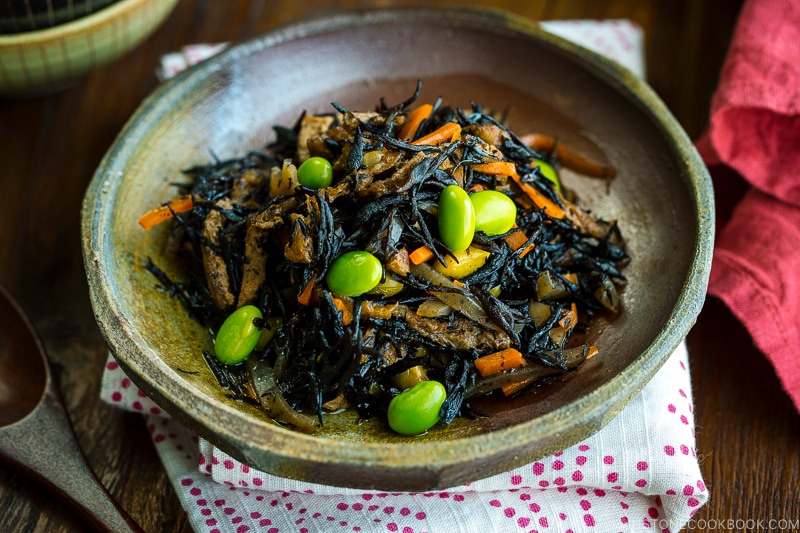Hijiki is an edible seaweed with a black and shredded appearance. It’s usually sold dried and eaten in Japanese, Chinese, and Korean cuisine.

Hijiki (ひじき・鹿尾菜・羊栖菜) is a seaweed harvested on rocky coastlines of Japan, Korea, and China. It’s green to brown when harvested, then black when boiled and dried.
Table of contents
What Is Hijiki
Hijiki (Sargassum fusiforme) has a black and shredded appearance. Farmers harvest the seaweed in the spring between spring and low tide. This traditional food has been a part of a balanced diet in Japan for centuries. It’s rich in dietary fiber, vitamins, and essential minerals, such as calcium, iron, and magnesium.
What Does It Taste Like
It has a savory and earthy flavor with a less pronounced briny taste than other seaweeds such as wakame and nori. It has a pleasant crunch and chewy bite after cooking.

How To Use
Soak the seaweed in cold water for 30 minutes before use. Drain well, rinse under running water, and it’s ready for use.
The Japanese consume it in Hijiki Salad, a side dish with julienned carrots, konnyaku/konjac, lotus root, edamame beans, and aburaage seasoned with dashi broth, soy sauce, mirin, and sake. It’s also mixed into steamed rice, formed into onigiri rice balls, or cooked in a sweet-savory sauce for furikake.
Recipes Using Hijiki
Where To Buy
Find it in the dried foods aisle of Japanese, Korean, and Asian supermarkets and natural food stores.
Regarding Hijiki Food Safety Warning
You might see a Prop 65 warning label on the kombu product. Kombu doesn’t cause cancer specifically; however, seaweeds grown in Japan are harvested in water with higher traces of heavy metals than seaweeds harvested elsewhere in the world. Some health agencies have warned against consuming hijiki, which contains more inorganic arsenic than other kombu. But there is no ban against it or other seaweed anywhere.
All kombu contain traces of organic arsenic, but not in quantities that can hurt you. If you don’t consume much of it daily, it’s safe to eat. However, companies are required to put a Prop 65 warming label on their products in California.
Wish to learn more about Japanese cooking? Sign up for our free newsletter to receive cooking tips & recipe updates! And stay in touch with me on Facebook, Pinterest, YouTube, and Instagram.










